
Do you have a question about the Honda 2005 Element and is the answer not in the manual?
| Brand | Honda |
|---|---|
| Model | 2005 Element |
| Category | Automobile |
| Language | English |
Emphasizes the importance and proper use of seat belts for collision protection.
Advises on safe speed management to prevent accidents and injuries.
Warns against alcohol consumption and driving due to impaired responses.
Stresses the necessity of properly restraining children for safety in crashes.
Alerts to potential risks associated with airbag deployment if occupants are not positioned correctly.
Highlights regular maintenance and checks for safe vehicle operation.
Details the function and importance of seat belts as the primary safety device.
Explains the role of airbags as a supplemental restraint system in frontal and side impacts.
Provides guidelines for safe positioning and seat belt use for adult and teenage occupants.
Offers general rules for safely restraining children of all ages in the vehicle.
Instructions on securing vehicle doors to enhance safety and prevent accidental opening.
Guidance on adjusting front seats for proper driving position and airbag safety.
Instructions for adjusting seat-back angle for optimal safety and comfort during driving.
Explains how to properly position head restraints to protect against whiplash and crash injuries.
Details the correct procedure for fastening and positioning seat belts for maximum effectiveness.
Emphasizes the importance of maintaining an upright sitting posture for occupant safety.
Provides safety recommendations for pregnant occupants regarding seat belt use and seating position.
Offers extra safety advice regarding airbags, seat belts, and vehicle modifications.
Describes the parts and features of the vehicle's seat belt system.
Explains the proper use and function of the lap and shoulder seat belts.
Details how automatic tensioners tighten seat belts during a collision for added restraint.
Provides guidance on regularly inspecting and maintaining seat belts for safety and proper function.
Lists and describes the components of the vehicle's airbag system.
Explains the operation and inflation process of the front airbags during a collision.
Describes the two-stage inflation capability of airbags based on crash severity.
Explains how airbags deploy at different thresholds based on occupant restraint status.
Details the function and deployment of side airbags, including cutoff systems.
Explains the automatic system that deactivates the passenger side airbag under certain conditions.
Offers further safety advice concerning airbag system tampering and modifications.
Explains the function of the SRS indicator light for system status and potential issues.
Describes the indicator that signals when the passenger side airbag is automatically shut off.
Provides information on servicing and replacing airbag components, recommending professional service.
Stresses the legal requirement and safety benefit of restraining all children in the vehicle.
Mandates the use of approved child seats for infants and small children.
Advises on proper restraint for larger children using seat belts and booster seats.
Recommends placing children in the back seat for enhanced safety, away from front airbags.
Warns about the severe risks to children from passenger front airbag inflation.
Provides specific warnings about placing forward-facing child seats in the front seat for small children.
Discusses the risks to larger children from passenger front airbags if not properly positioned.
Warns against placing rear-facing child seats in the front due to airbag risks to infants.
Details how to properly restrain infants in rear-facing child seats for head and neck support.
Explains the types of child seats suitable for infants, emphasizing rear-facing.
Advises on the safest placement of child seats, prioritizing the back seat.
Provides guidance on restraining small children in forward-facing child seats, recommending back seat placement.
Describes forward-facing child seats and the recommended five-point harness system.
Strongly recommends placing forward-facing child seats in the back seat, not the front.
Guides on choosing a child seat that meets safety standards and fits the child and vehicle.
Outlines the main steps for securely installing a child seat in the vehicle.
Details the process of installing a LATCH-compatible child seat using lower anchors and tether.
Explains how to install a child seat using the vehicle's seat belt system, including locking retractors.
Provides a guide to check if a child's seat belt fits correctly, determining the need for a booster seat.
Explains when and how to use booster seats for children who have outgrown child seats.
Discusses the conditions and risks associated with allowing larger children to ride in the front passenger seat.
Offers extra precautions for larger children regarding seat belt use and proper positioning.
Identifies the locations of major vehicle controls and switches for easy reference.
Provides an overview of the vehicle's instrument panel and its indicators.
Explains the function and interpretation of the vehicle's various gauges.
Details the controls located on or near the steering wheel for convenient access.
Details the controls for operating the windshield wipers and washers.
Explains the operation of headlights, turn signals, and hazard lights.
Covers adjusting panel brightness, hazard lights, and rear window defogger operation.
Details rear defogger operation and adjusting the steering wheel for position and safety.
Explains the vehicle's key system, locks, and the immobilizer.
Explains the vehicle's anti-theft immobilizer system and its operation.
Describes the functions and care of the remote keyless entry transmitter.
Explains the different positions of the ignition switch and their functions.
Details the operation of power door locks, rear doors, hatch, and tailgate.
Covers seat adjustments, armrests, head restraints, and rear seat access.
Explains the operation of power windows, including auto reverse and manual modes.
Guides on adjusting interior and power exterior mirrors for optimal visibility.
Covers rear window operation, parking brake use, and skylight functions.
Identifies various interior storage areas like pockets, glove box, and beverage holders.
Explains the operation of ceiling, cargo area, and ignition switch lights.
Explains the vehicle's climate control system, including vents, heating, and air conditioning.
Guides on operating the AM/FM radio, including tuning, seeking, and presets.
Details how to use the XM satellite radio, including channel selection and subscription.
Explains how to play CDs, including MP3 and WMA formats, and disc player controls.
Provides advice on handling and protecting discs to ensure proper playback and prevent damage.
Lists common error messages for the disc player and their solutions.
Lists common error messages for the disc changer and their solutions.
Explains the anti-theft system for the audio unit and how to re-enable it after power loss.
Guides on setting the vehicle's clock after battery disconnection or power loss.
Explains how to use the cruise control system for maintaining set speeds on highways.
Explains how to adjust the fan speed to control airflow volume.
Details how to adjust the temperature control dial to regulate airflow temperature.
Explains how to select different airflow modes for heating and cooling.
Describes how to turn the air conditioning system on and off.
Explains the different controls for managing air flow within the climate system.
Explains how to use the heater to warm the vehicle's interior.
Guides on using the air conditioning system to cool the interior.
Explains the ventilation system for drawing in outside air.
Explains the recirculation button to control interior air circulation and prevent fogging.
Details how to operate the rear window defogger to clear moisture and frost.
Explains how to use AC to remove moisture from the air, making the interior dry.
Provides steps to clear fog and frost from interior windows.
Offers tips for clearing frost and ice from exterior windows for better visibility.
Guides on turning on the radio and adjusting basic settings like volume and band.
Explains various methods (TUNE, SEEK, SCAN, AUTO SELECT) for finding radio stations.
Explains how to manually tune the radio to a specific frequency using the TUNE knob.
Describes the SEEK function to automatically find stations with strong signals.
Explains the SCAN function for sampling stations and selecting one.
Describes the auto select feature for finding stations in a local area and storing presets.
Guides on adjusting audio settings like Bass, Treble, Balance, and Fader.
Explains how to store and recall radio stations using the preset buttons.
Explains how to adjust side-to-side (Balance) and front-to-back (Fader) sound distribution.
Guides on adjusting the tone controls for Bass, Treble, and Sub-Woofer.
Introduces XM Satellite Radio service and its availability in the US.
Explains how satellite radio signals are received and factors affecting reception.
Guides on turning on the audio system and selecting XM radio mode.
Explains methods (TUNE, SEEK/SKIP, SCAN) for finding channels on XM radio.
Explains how to change the display information for XM radio channels.
Explains how to use the TUNE knob to select XM channels.
Guides on selecting XM categories and searching for channels within them.
Explains the SCAN function for sampling XM channels.
Explains how to store and select XM channels using preset buttons.
Guides on loading and playing discs in the CD player, including MP3/WMA support.
Explains the CD button to select the disc player mode.
Describes how to use the eject button to remove a disc from the player.
Identifies the seek/skip bar for navigating tracks or files.
Explains how to activate random playback mode for discs.
Explains how to use skip buttons to move between tracks or files.
Describes how to use the folder knob to select folders on MP3/WMA discs.
Identifies the indicator that shows when a disc is being played.
Explains how to stop disc playback and remove the disc.
Explains how to connect and select auxiliary audio input devices.
Provides information on identifying and addressing audio system malfunctions.
Provides advice on handling and protecting discs to ensure proper playback and prevent damage.
Guides on operating the optional six-disc CD changer, including loading and selection.
Details clock setting procedures for LX and DX models.
Details clock setting procedures for U.S. EX models.
Details clock setting procedures for Canadian EX models.
Indicates that cruise control may be an optional feature.
Explains how to operate the cruise control system, including setting and cancelling speed.
Details methods to increase or decrease the set cruising speed.
Explains how to resume the previously set cruising speed after cancellation.
Lists ways to cancel cruise control, including brake pedal and CANCEL button.
Provides recommendations for the initial driving period to ensure vehicle reliability.
Advises on the type of gasoline and fuel additives to use for optimal performance.
Outlines procedures for refueling and basic checks at a service station.
Provides instructions on how to safely open and close the vehicle's hood.
Explains how to check the engine oil level and add oil if necessary.
Guides on checking the engine coolant level and adding coolant if low.
Offers tips on how to improve fuel economy through driving habits and maintenance.
Discusses Honda accessories and the implications of non-Honda accessories.
Warns about the risks of modifying vehicle components and recommends consulting the dealer.
Provides guidance on load limits and safe cargo handling practices.
Explains how to determine the vehicle's load limits and calculate available cargo capacity.
Offers advice on safe driving practices, considering vehicle characteristics like ground clearance.
Lists essential checks and adjustments to perform before driving the vehicle.
Provides instructions for starting the engine under various conditions, including cold weather.
Explains how to operate the manual transmission, including shifting and clutch use.
Details how to operate the automatic transmission, including shift lever positions and modes.
Offers advice on safely parking the vehicle, including brake use and uphill/downhill considerations.
Explains the vehicle's braking system, including power assist and dual circuits.
Details the operation of the ABS system, how it works, and driver interaction.
Provides essential information and guidelines for safely towing a trailer.
Explains the procedure for towing the vehicle behind a motorhome, emphasizing flat towing.
Offers specific advice and precautions for driving the vehicle on unpaved roads and off-highway conditions.
Emphasizes crucial safety precautions to be followed during vehicle maintenance.
Provides schedules for normal and severe driving conditions to guide maintenance intervals.
Offers a section to record completed maintenance services for tracking purposes.
Identifies the locations of various vehicle fluid reservoirs under the hood.
Guides on how to check and add engine oil, including the recommended type.
Details the procedure for changing engine oil and filter, recommending professional service.
Explains how to check and add engine coolant, including the recommended type and warnings.
Guides on checking and refilling the windshield washer fluid reservoir.
Explains how to check and add automatic transmission fluid, including recommended types.
Guides on checking and adding manual transmission fluid, including temporary replacements.
Explains how to check brake and clutch fluid levels and the importance of using the correct fluid.
Guides on checking power steering fluid and cleaning body panels.
Covers the replacement of various vehicle light bulbs, including headlights and taillights.
Provides guidance on cleaning seat belts and replacing the dust/pollen filter.
Guides on inspecting and replacing wiper blades and general tire care.
Explains how to check the battery's condition and maintain its terminals.
Offers advice on preparing the vehicle for extended storage to prevent deterioration.
Describes the compact spare tire, its limitations, and precautions for use.
Provides step-by-step instructions for changing a flat tire safely.
Offers diagnostic steps for troubleshooting engine starting problems.
Details the procedure for jump-starting a vehicle with a dead battery.
Provides instructions on what to do if the engine overheats, including safety warnings.
Alerts to critical warning lights for low oil pressure and charging system issues.
Explains the meaning of the check engine light and potential causes.
Explains the brake system warning light and actions to take if it illuminates.
Guides on checking and replacing fuses to resolve electrical issues.
Identifies the locations of the interior and under-hood fuse boxes.
Provides instructions on contacting towing services and the correct towing methods.
Locates various vehicle identification numbers, including VIN and engine numbers.
Provides detailed specifications for the vehicle, including dimensions, weights, and capacities.
Explains DOT grading for tires, including treadwear, traction, and temperature ratings.
Explains markings on tire sidewalls, including size, load index, and speed rating.
Explains systems controlling emissions, including Clean Air Act standards.
Explains the function of the catalytic converter in converting exhaust gases into less harmful substances.
Explains OBD-II readiness codes and their importance for emissions testing.
Provides contact information for customer service and dealership support.
Outlines the types of warranties covering the vehicle, including limited and emissions warranties.
Explains how to report safety defects to NHTSA and the manufacturer.
Lists available factory-authorized manuals and how to purchase them.

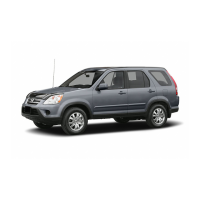


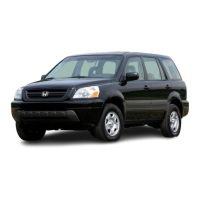
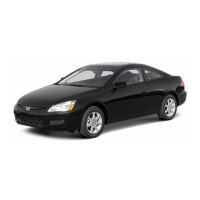

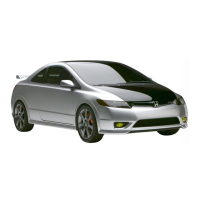
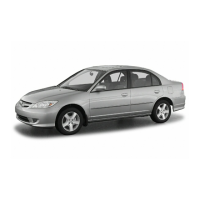


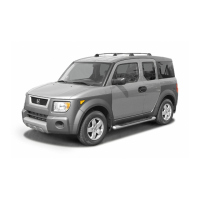
